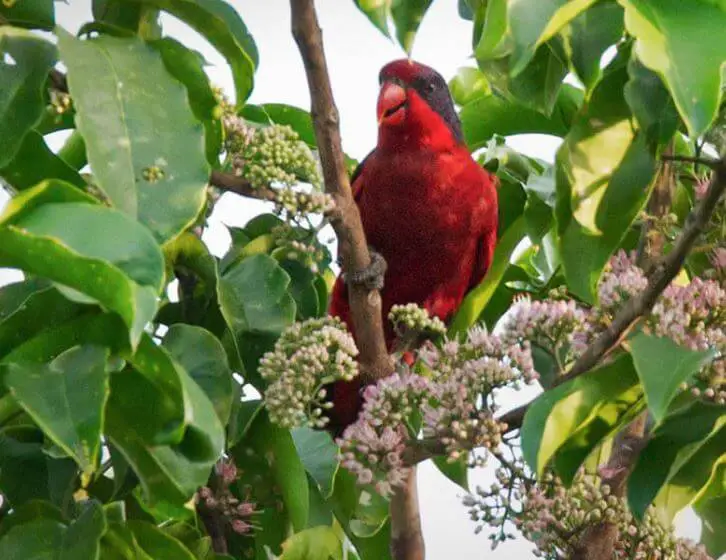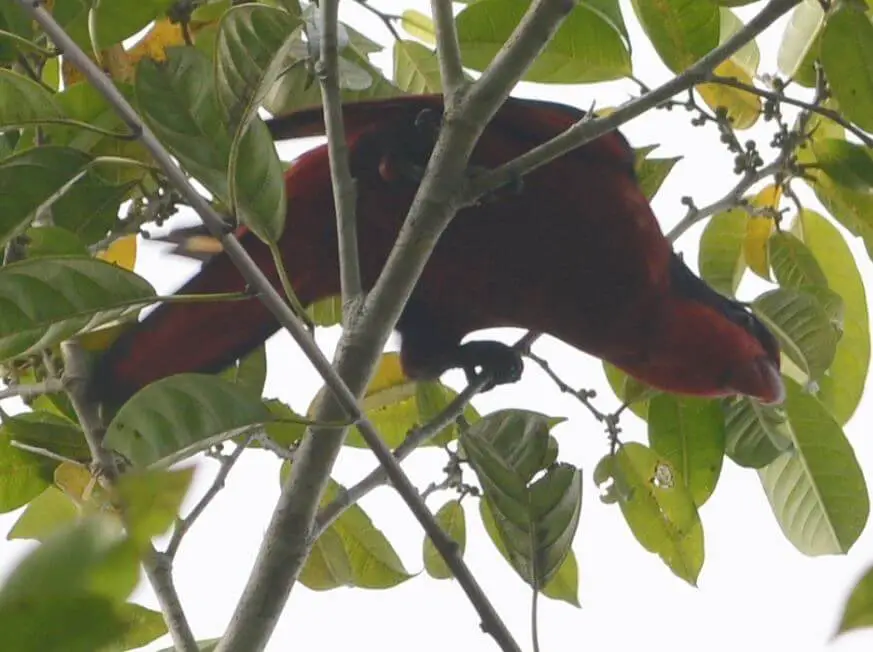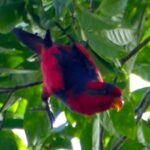
Black-winged Lory 30 cm; 120 g. Generally red; bill orange; purplish-blue patch around eye extending through ear-coverts to sides of neck; upper wing-coverts, scapulars, and back black;
secondaries and primaries tipped black; thighs and flank spot black; tail black, outer feathers red on inner vanes, hence appears largely red below. Immature has purplish edges to body feathers.
Monotypic.
Subspecies
Monotypic.
Distribution
Islands in N Geelvink Bay (Manim, Numfor, Biak, Num), in NW New Guinea.
Habitat

Black-winged Lorys feed in the inland forest up to 460 m and roost in coconut plantations and coastal forests.
Movement
Birds are reported to be highly nomadic, but this is perhaps on a short-term basis without seasonal influence.
Diet and Foraging
Recorded feeding in flowering trees.
Black-winged Lory foraging
SOURCE: Birding Indonesia
Sounds and Vocal Behavior
Utters mostly squeaky shrieks such as “skeet!” or “kleet!”. Also similar-sounding disyllabic notes and, when perched, more subdued somewhat whining nasal notes.
Breeding
Courtship and nest prospection observed Jun–Jul. In captivity: two eggs; incubation lasting 26 days; Black-winged Lory nestling period 75–87 days.
SOURCE: Jovan Owimrin
Conservation Status

VULNERABLE. CITES II. A BirdLife “restricted-range” species. Status on Numfor and Manim is unknown but likely to be very poor owing to the almost total clearance thereof primary forest. Generally uncommon on Biak, though common on adjacent Supiori; at risk on former through habitat loss and trade.
International trade may be a serious threat: Indonesian records indicate 632, 1370, and 1370 birds exported, from 1988–to 1990. Commercial importation into the EU from Indonesia has been prohibited since Dec 1989.




















